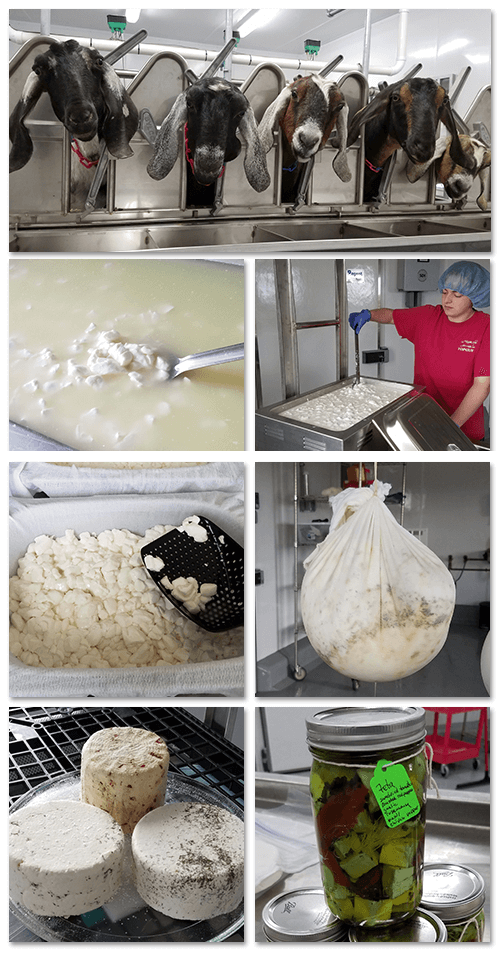 We milk the girls 6 at a time in the milking parlor and the milk goes directly to the bulk tank in the closed in line pipe system. The entire system then goes through a rinse, detergent wash, acid wash and sanitizing cycle.
We milk the girls 6 at a time in the milking parlor and the milk goes directly to the bulk tank in the closed in line pipe system. The entire system then goes through a rinse, detergent wash, acid wash and sanitizing cycle.
Once in the bulk tank the milk is chilled to 35 degrees and held at this temperature until used, in 24 to 72 hours but never more than 72 hours by USDA regulations.
When cheese is made, the milk is pumped from the bulk tank by a gentle peristaltic pump to a vat pasteurizer in the cheese room. The tank is then cleaned and sterilized for the next round of milking.
Pasteurization is at 145 degrees for 30 minutes and then the milk is cooled to the desired temperature for the type of cheese to be made that day. Careful records are kept of the date, pasteurization temperature and times, and gallons of milk pasteurized.
Culture is added and developed depending on type of cheese desired and the rennet is added for development of the cheese curd. This timing is also variable depending on cheese type and records are kept of amount of milk, milk temperature, culture type, inoculation time, rennet type and resting time for curd development and any variables which occurs for consistency.
Depending on the cheese type the curd is then scooped out or cut to facilitate removal of the whey. Further whey removal is performed by hanging or draining the curd in colanders lined with butter muslin or cheese cloth. The vat is then cleaned and sterilized. Further whey removal is with pressing in hard cheeses or salting and resting in the case of fetas. Herbs can be added during this phase or later in the case of soft cheeses.
Finally the product is salted and herbs may or may not be added for flavor enhancement before shaping and packaging. Soft cheese can be sold fresh or frozen at this point. Or some cheeses go on to be brined and aged for variable times before sale.

